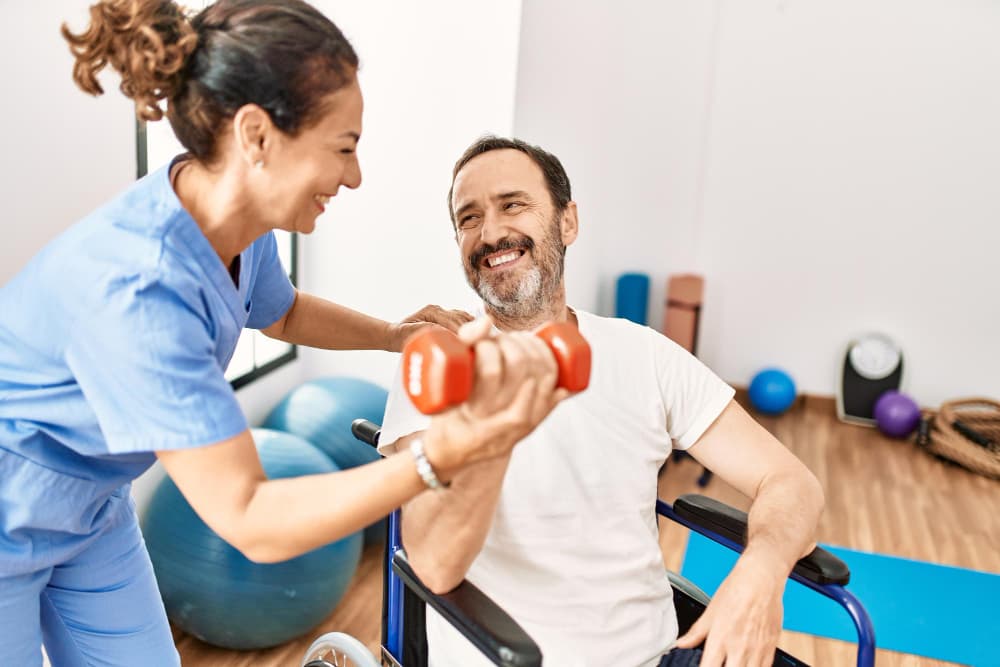Bankart Repair Surgery
Bankart repair is a surgical intervention targeting tears or injuries in the glenoid labrum—a cartilaginous structure in the shoulder joint. Crucial for stabilizing the shoulder and facilitating various arm movements, the glenoid labrum's integrity is vital for overall shoulder function. When nonoperative treatments prove insufficient, surgery becomes an option to restore the damaged labrum. The procedure involves arthroscopic repair, utilizing minimally invasive techniques and specialized instruments. This ensures a quicker recovery for individuals undergoing this specific surgical procedure. Active participation and open communication with healthcare providers are vital throughout this preparation process to tailor the approach to the patient's specific needs. The glenoid labrum plays a pivotal role in stabilizing the shoulder and facilitating a diverse range of arm movements, making its integrity absolutely vital for the overall function of the shoulder.

Before Surgery
Before Bankart repair surgery, a thorough assessment is conducted to diagnose the extent of the tear or injury in the crucial shoulder structures. Nonoperative treatments, such as rest, physical therapy, and medications, may be attempted initially. If these prove ineffective or if the tear is severe, surgery is considered. The orthopedic surgeon evaluates factors like tear size and location to determine the most suitable surgical approach, which involves arthroscopic repair. Patients are informed about the procedure, potential risks, and expected rehabilitation. The decision for surgery is based on the individual's condition, emphasizing comprehensive preoperative evaluation and patient education.
- Comprehensive Medical Evaluation: Evaluate the patient's overall health through a thorough medical assessment, including a review of medical history, physical examinations, and possibly additional tests like blood tests and imaging studies.
- Orthopedic Evaluation: Assess the extent of the labrum damage through physical examination and imaging (X-rays, MRI) to determine the appropriateness of arthroscopic Bankart repair as the solution.
- Discussion of Risks and Benefits: Engage in thorough discussions with the surgeon regarding potential risks and benefits of the arthroscopic surgery, addressing concerns, and ensuring a clear understanding of what to expect.
- Medication Review: Review and, if necessary, adjust or stop certain medications that might interfere with the arthroscopic surgery or recovery process, such as blood thinners.
- Preoperative Exercises: Follow specific exercises recommended by the surgeon or physical therapist to enhance shoulder joint flexibility and strength in preparation for the arthroscopic surgery.
- Home Preparation: Make essential arrangements for a conducive home recovery environment, including assistance, securing mobility aids (such as slings or braces), and modifying the living space for ease of movement.
- Rehabilitation Planning: Discuss post-operative rehabilitation plans with the healthcare team, emphasizing the importance of physical therapy in the recovery process.
This comprehensive approach aims to minimize potential complications, enhance the success of arthroscopic Bankart repair, and ensure a smooth recovery for individuals undergoing this specific surgical procedure. Active participation and open communication with healthcare providers are vital throughout this preparation process to tailor the approach to the patient's specific needs.
During Surgery
During Bankart repair surgery arthroscopically, anesthesia induces a patient as the surgical team systematically addresses the torn labrum using minimally invasive techniques. Small incisions allow for the insertion of a fiber-optic scope and specialized instruments. The surgeon visualizes and repairs the labrum, ensuring optimal alignment and stability for optimal function. Advanced arthroscopic methods contribute to quicker recovery. Throughout the procedure, vital signs are closely monitored. The success of this proven technique is underscored by the expertise of the surgical team, mitigating potential risks. Post-surgery, a recovery period and rehabilitation plan follow for enhanced shoulder function.
- Anesthesia: Administer either general anesthesia or regional anesthesia based on factors like the patient's health and surgeon's preference.
- Arthroscopic Approach: Utilize small incisions for the insertion of a fiber-optic scope and specialized instruments to visualize and repair the torn labrum.
- Alignment and Stability: Ensure optimal alignment and stability of the labrum for enhanced shoulder function.
- Vital Signs Monitoring: Closely monitor vital signs throughout the arthroscopic procedure for patient safety.
- Minimally Invasive Techniques: Employ advanced arthroscopic techniques to minimize tissue disruption and contribute to a faster recovery.
- Implant Placement: Securely implant any necessary anchors or sutures to facilitate the repair, ensuring optimal alignment and stability.
- Closure: Close the small incisions using stitches or staples to promote proper healing.
After Surgery
After arthroscopic Bankart repair, a vital rehabilitation plan is crucial for optimal recovery. The post-surgery process unfolds across multiple stages. Initially, patients have a brief recovery period, managing pain and gradually shifting from assisted devices to independent mobility. Wound care protocols prevent infections, and activity modification helps patients adjust to initial restrictions. Early physical therapy, both in the hospital and at home, concentrates on improving mobility and strength. Follow-up appointments track progress and address concerns, while long-term rehabilitation includes sustained exercises. This comprehensive approach guarantees a triumphant return to an active, pain-free lifestyle.
- Recovery Period: Experience a brief recovery period, managing post-operative discomfort with appropriate medications.
- Ambulation: Gradually progress from assisted devices to independent ambulation as the shoulder heals.
- Wound Care: Follow proper wound care instructions to prevent infection, with stitches or staples removed during a follow-up.
- Activity Modification: Adhere to initial restrictions on certain activities and movements.
The success of arthroscopic Bankart repair relies on active participation in rehabilitation, with individuals often experiencing significant improvement in pain and function within a few months. Open communication with healthcare providers ensures a personalized rehabilitation plan, facilitating a successful return to an active and pain-free lifestyle.